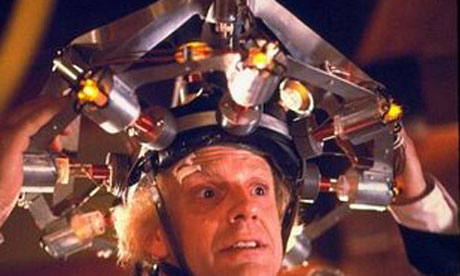Think you're smarter than me?
|
One of the little-noted provisions in that legislation floating around Washington -- it has to do with payroll tax cuts and an oil pipeline -- is a suspension of the ban on 100-watt lightbulbs.
I've been stocking up on these babies, because I hate these new CFL bulbs. It's like we're back in pioneer days living by candlelight.
Well, here's an inside look at who gets what in all this mess. Just read it all.
When Republicans suspended the 100-watt-light-bulb ban, they said they were trying to protect consumer choice. But they also managed to show how regulations help big business at the expense of the little guy.
The light-bulb ban was part of an energy bill pushed by Democrats in 2007 that set efficiency standards that traditional incandescent bulbs could never meet. The first to go was supposed to be the 100 watt bulb in 2012, followed by 75 watt bulbs the next year and the ubiquitous 60-watt bulb in 2014.
The argument is that forcing consumers to buy more efficient — and far more expensive — bulbs will greatly reduce energy consumption, and in turn, air pollution and global warming.
Earlier this month, Republicans suspended the law until October by denying funds for its implementation as part of a massive spending bill. For Democrats, this move was another sign of how out of touch the GOP is.
But look who else is complaining. As Politico reported, "big companies like General Electric, Philips and Osram Sylvania (are) fuming." Allegedly these companies are mad because they invested lots of money getting ready for the new rules.Fact is, they were pushing for the ban all along.
In 2007, Philips urged an incandescent ban as a way to force the market toward high-efficiency bulbs, complaining that without such laws, "purchase price and functional performance often take precedence over environmental concern."
That same year, the National Electrical Manufacturers Association, which represents companies making 95% of bulbs sold in the U.S., told a Senate panel that a ban was needed "to further educate consumers on the benefits of energy-efficient products."
You can believe if you want these companies only had Mother Earth in mind with this ban. But more likely they saw it as a chance to fatten their bottom lines. Who wouldn't jump at the chance to outlaw a low-margin, 60-cent product when you're trying to hawk a high-margin $3 alternative?
This would hardly be the first time big business teamed up with big government to enhance profits through competition-crushing regulations. Timothy Carney's book, "The Big Ripoff," detailed many cases where businesses "profit from big government policies that rip off consumers."
Thanks to the GOP, consumers now can see this seedy process at work, clear as day.
Journalism -- we bring good things to light.


























